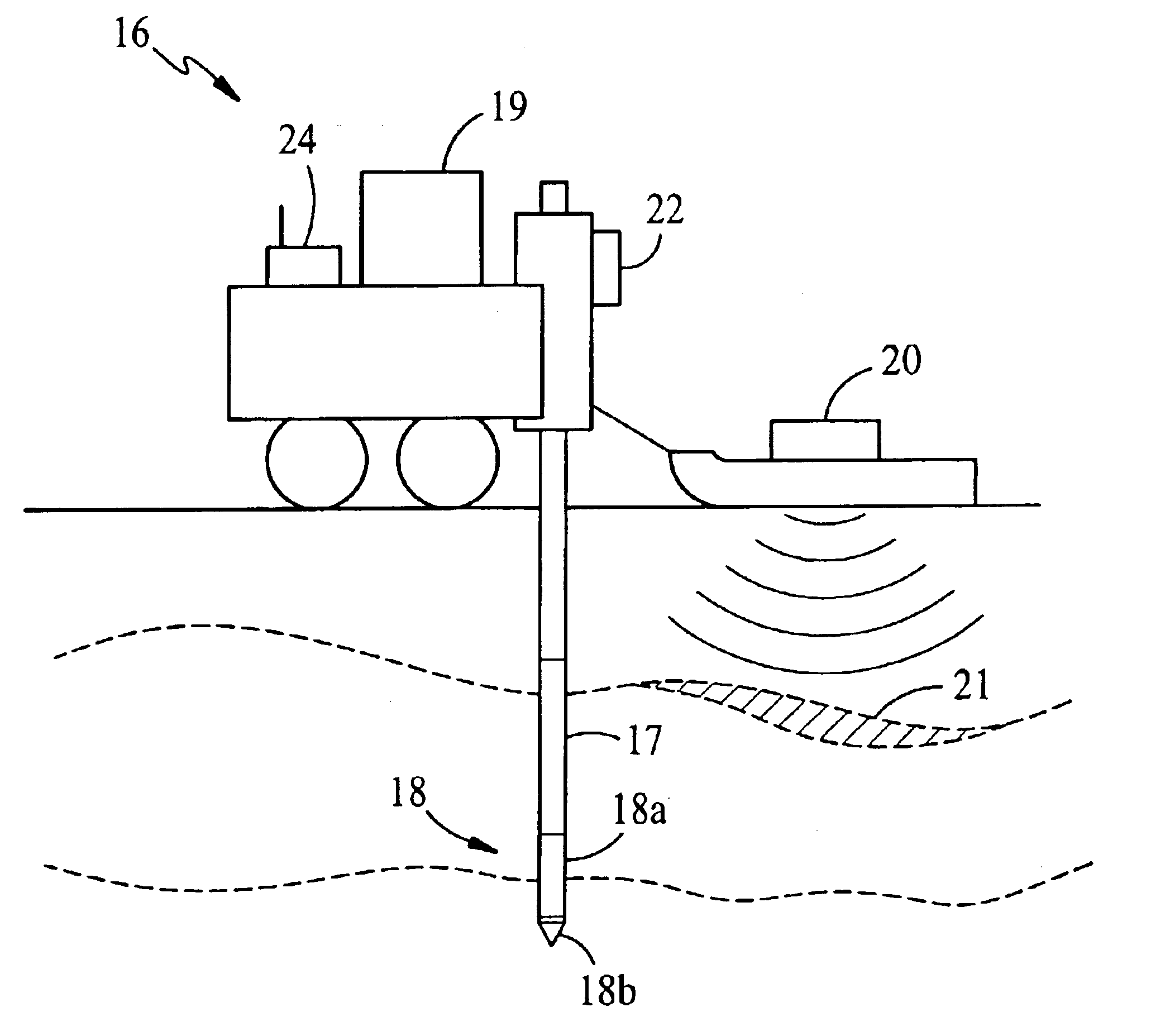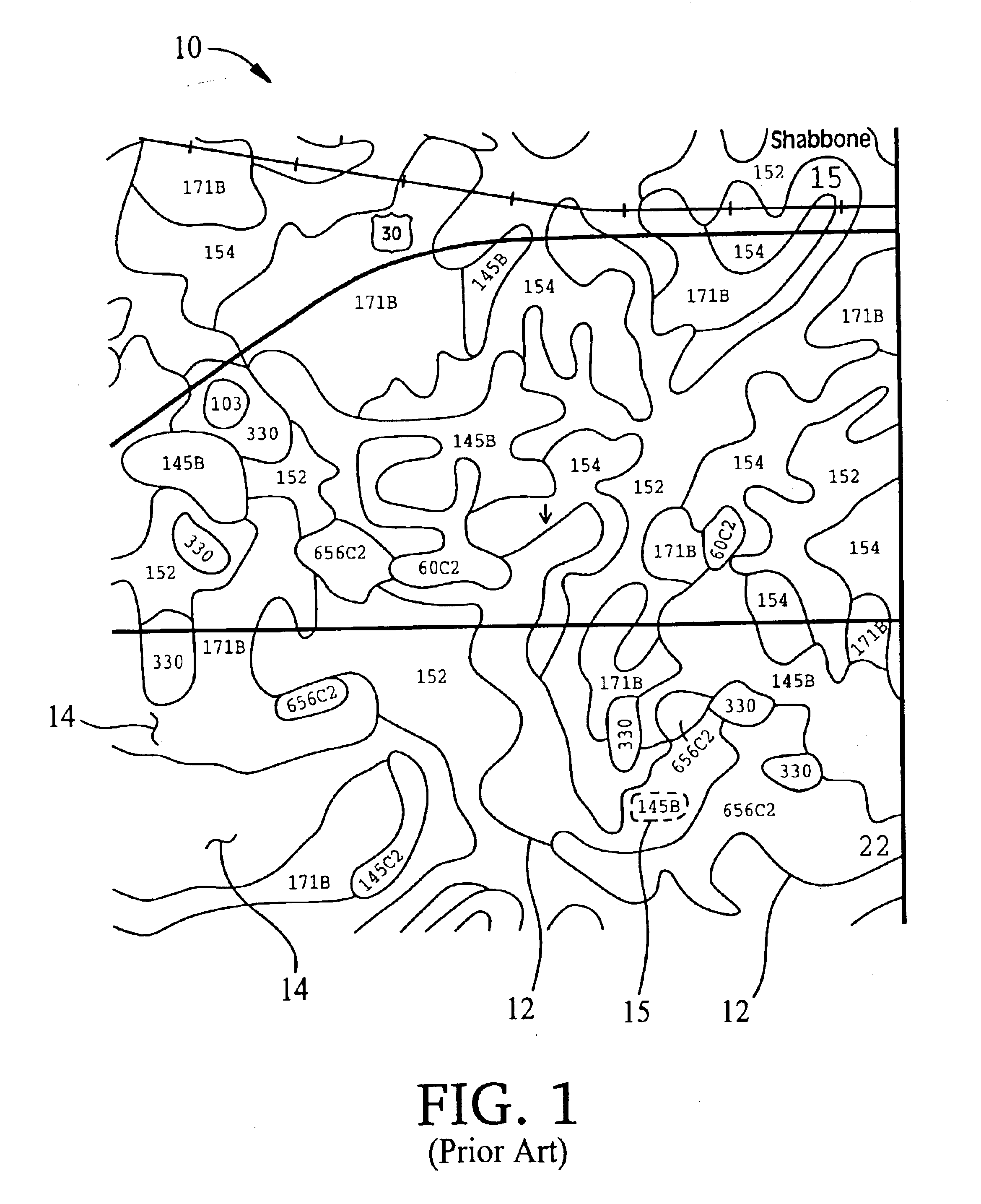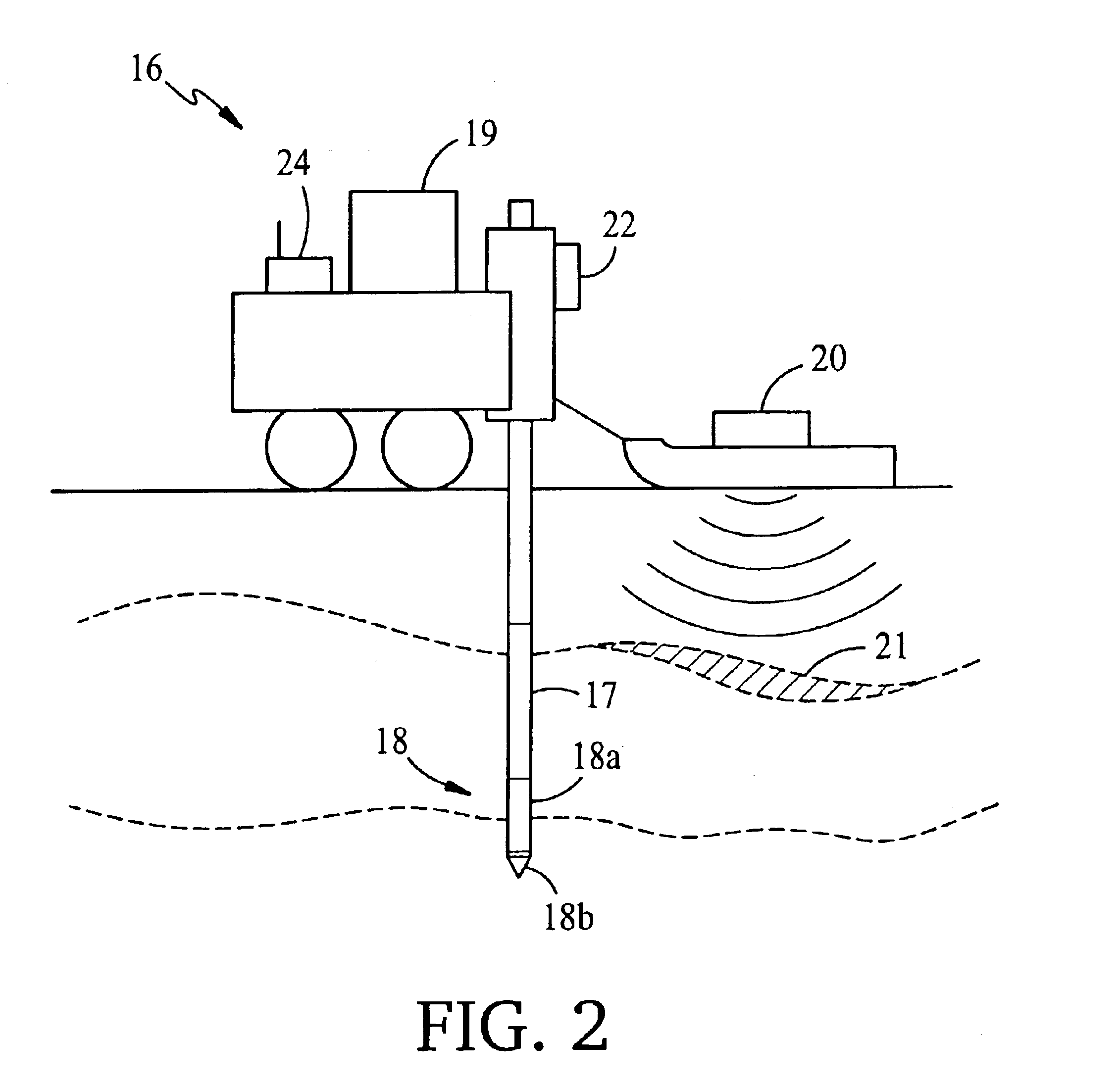Soil and topography surveying
a topography and soil technology, applied in the field of soil and topography surveying and mapping, can solve the problems of soils subject to frequent waterlogging and flooding, low stability of soils, and slow surface drainage and internal drainage, so as to improve the efficiency of in-field subsurface surveying, improve sampling strategy flexibility, and improve the effect of human resources
- Summary
- Abstract
- Description
- Claims
- Application Information
AI Technical Summary
Benefits of technology
Problems solved by technology
Method used
Image
Examples
Embodiment Construction
[0061]Referring first to FIG. 1, soil topology information is shown in air photo 10 overlaid with closed boundaries or polygons 12 each enclosing a geographic region 14 or “soil map unit” labeled with a number corresponding to a specific subsurface material characteristic reference profile identified in a USDA-NRCS Soil Survey as a soil series description. In this illustrated example covering approximately 1000 acres, there are several polygons 12, each of which bounds a numbered soil map unit 14. As the numeric label 15 of the soil map unit corresponds to a particular characteristic soil type and profile, many soil map units in this field have identical labels. As shown, the polygons are of irregular shape as determined by local topology and rough sampling at the time of the survey.
[0062]FIG. 2 illustrates a test vehicle 16 adapted to collect in-field subsurface and available data for the site. Vehicle 16 includes a push system for pushing cone penetrometer (CPT) probes 17 or other...
PUM
 Login to View More
Login to View More Abstract
Description
Claims
Application Information
 Login to View More
Login to View More - R&D
- Intellectual Property
- Life Sciences
- Materials
- Tech Scout
- Unparalleled Data Quality
- Higher Quality Content
- 60% Fewer Hallucinations
Browse by: Latest US Patents, China's latest patents, Technical Efficacy Thesaurus, Application Domain, Technology Topic, Popular Technical Reports.
© 2025 PatSnap. All rights reserved.Legal|Privacy policy|Modern Slavery Act Transparency Statement|Sitemap|About US| Contact US: help@patsnap.com



